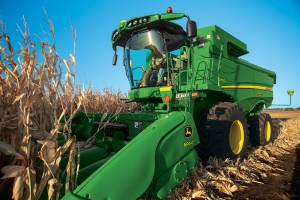Statistics show that Indiana agriculture accounts for $31 billion of direct sales and an additional $13 billion in related supply-chain purchases and spending by workers in the state. This data comes from a new report titled, "Beyond the Farm: A State and Regional Report on the Economic Contribution of Farms, Forests and Related Industries,” which was released on March 16 by Indiana University’s Kelley School of Business.
“Agriculture is a major driver of economic development in our state, and this study helps tell that story,” said Jane Ade Stevens, chief executive of the Indiana Soybean Alliance, which funded the study. "In addition, this study highlights the stability of agriculture as it was able to contribute $44.1 billion to Indiana’s economy even in the devastating drought of 2012.”
The central, north central, and northeast regions of the state were credited with generating the largest contributions to the economy. The south central and southeast areas were the least agriculturally productive, primarily due to a lack of quality farmland. The 4th District (represented by Todd Rokita) was responsible for nearly $2.7 billion in value added and supports about 33,600 jobs.
The state’s heavy agricultural output is largely focused on corn and soybean crops, which account for 63percent of the total agricultural production. In addition, Indiana was also among the leaders in hog and pig production, generating nearly $1.3 billion in sales, the fifth-largest total in the United States.
Indiana University’s findings highlight the importance of the agricultural industry to the Hoosier state’s economy.
